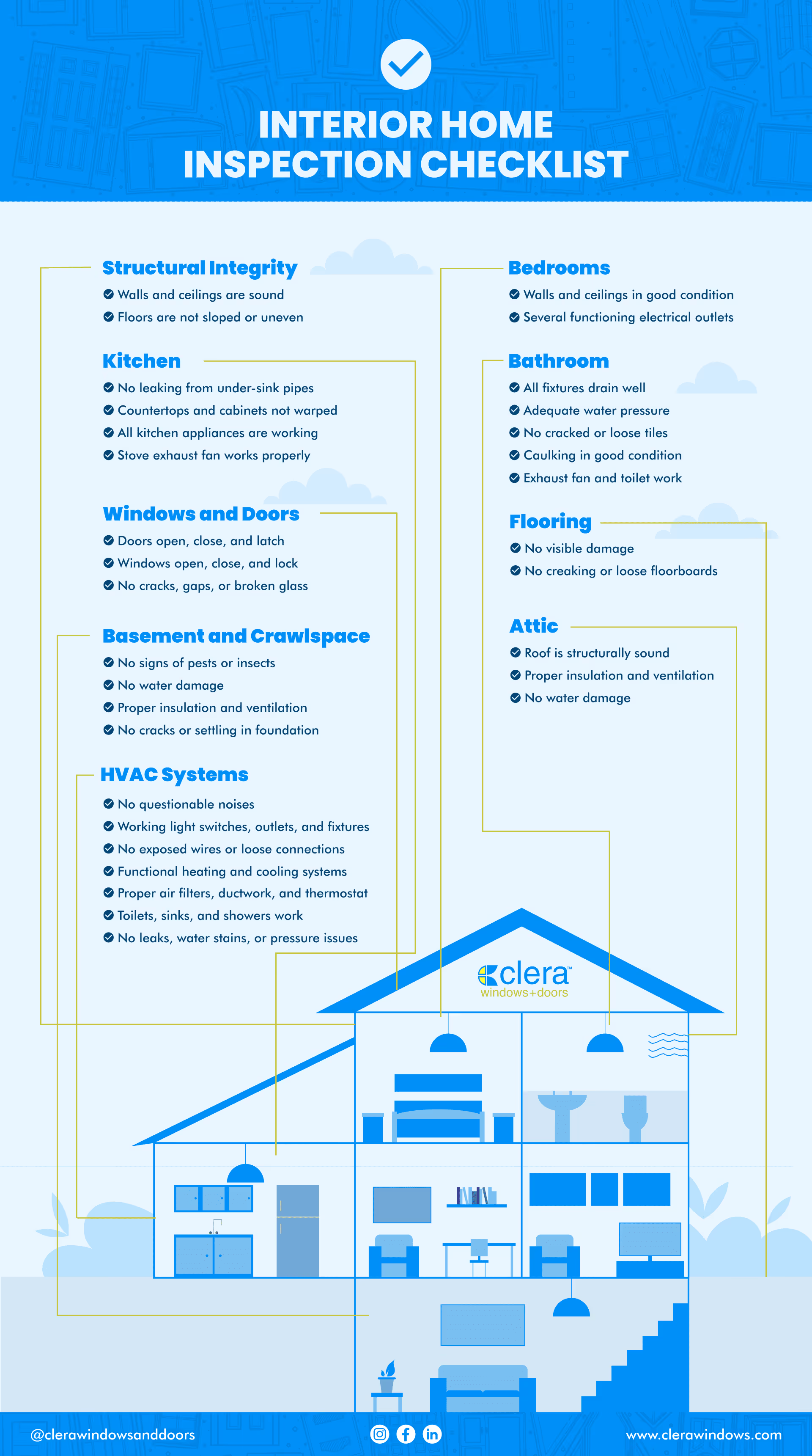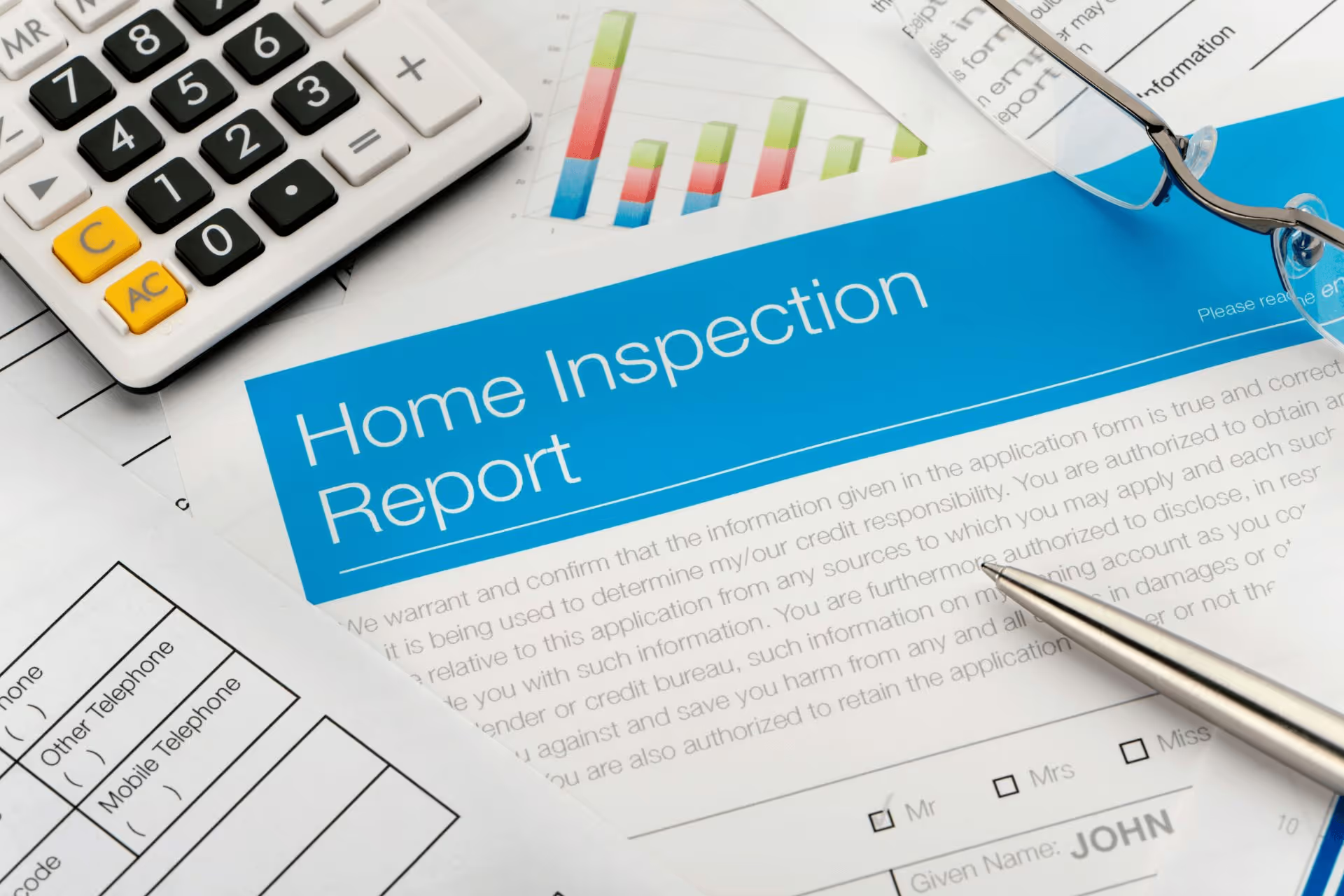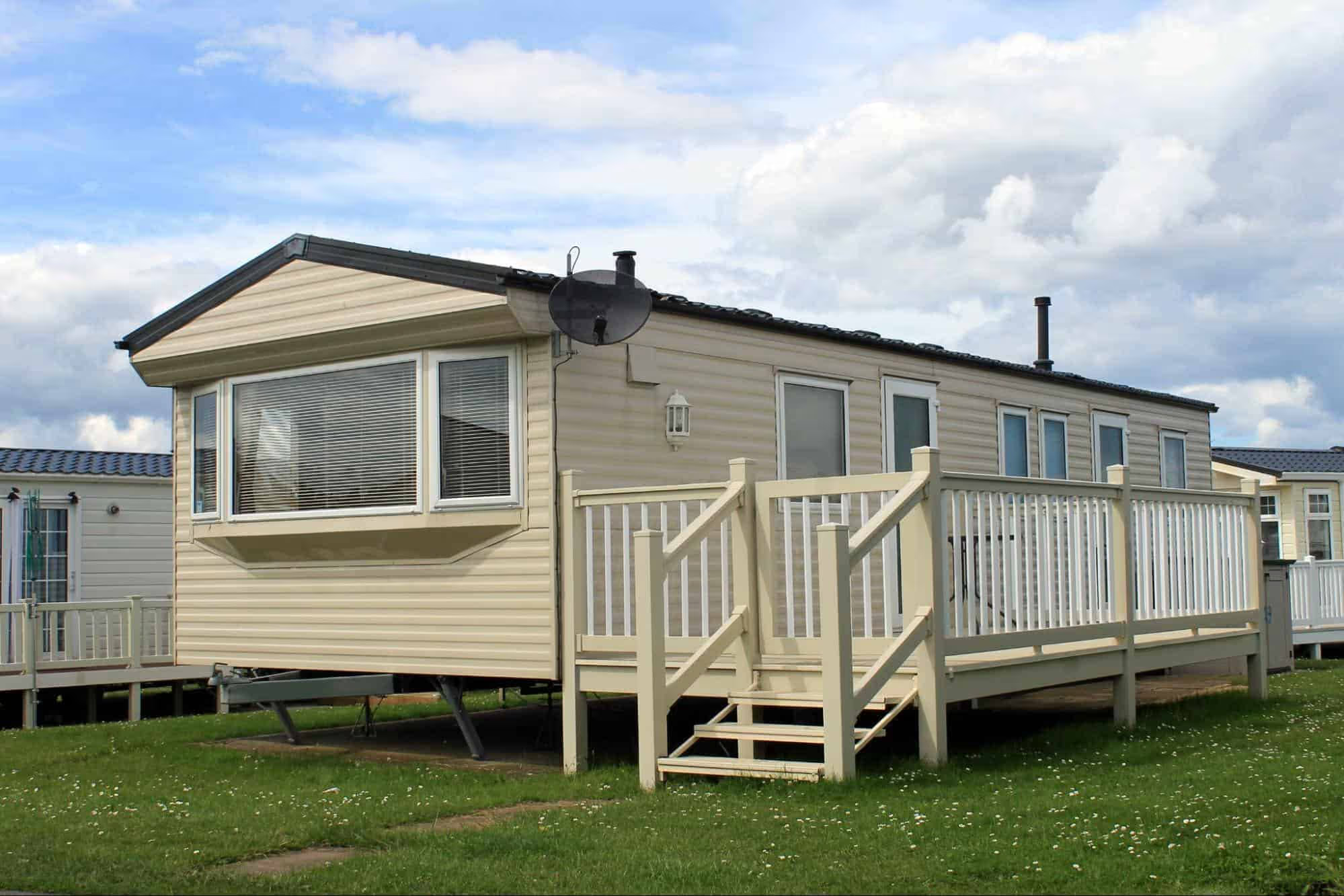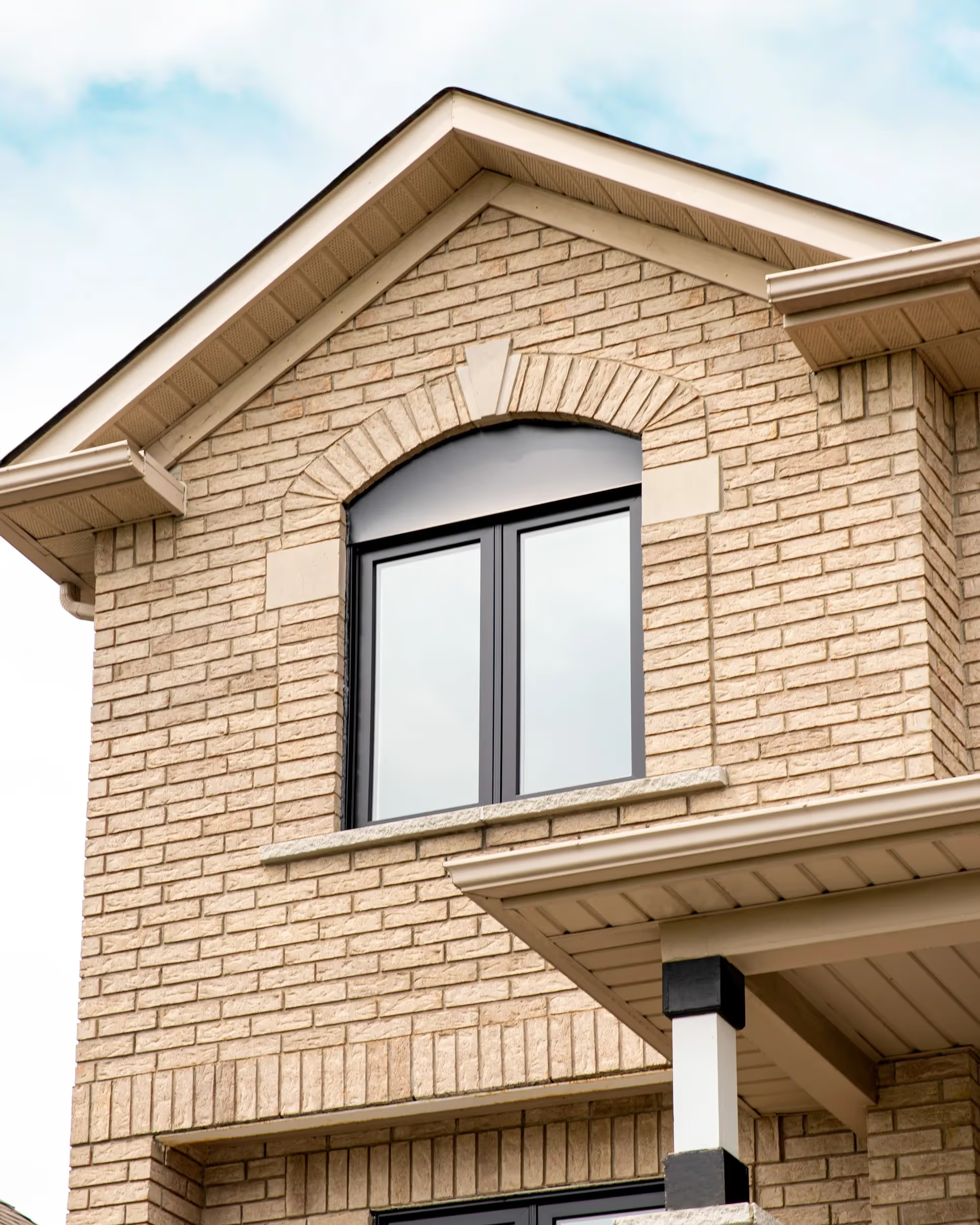Whether you’re buying or selling a house, it’s crucial to look past its charm and aesthetics. What you see isn’t always what you get when it comes to properties, and superficial factors alone cannot guarantee that a home is safe and livable.
This is where home inspections come in. During which, a professional home inspector conducts a thorough sweep of the interior and exterior of a home. This is a vital part of the home-buying process, and it is done to help you determine if there are any structural hazards or worn-down systems that need to be replaced.
But how much does it cost? What goes into a home inspection, and who pays for it?
Keep reading to find out the answers to these questions and how you can prepare with our free home inspection checklist below!
Contents:
What Happens During a Home Inspection?
What to Include In Your Home Inspection
→ Interior Inspection Checklist
→ Exterior Inspection Checklist
How Much Does Home Inspection Cost?
Home Inspection Tips for Buyers and Sellers
Next Steps for Homeowners in Ontario

What Happens During a Home Inspection?
When a home inspector visits a property, they assess everything from the foundation upon which it is built to the appliances inside the home. This inspection report serves as a valuable tool for homeowners to make informed decisions about their property, negotiate repairs with sellers, and prioritize maintenance tasks.
If you’re tagging along, take your property inspection checklist with you and ask any questions you might have along the way. A home inspector’s job is to help inform your decision, so take advantage of being able to get an objective opinion from an expert third party.
While it’s key to ask questions, the inspector likely won’t comment on the aesthetics of the home unless it impacts safety—their job isn’t to tell you if the front door matches the garage. They also might not be able to determine whether the property complies with the local building codes in your city or town or detect hidden issues in the house such as asbestos, mould, pests lurking in the walls, or other potential pollutants surrounding the area. Identifying these issues requires the input of specialized professionals.
What this report will provide you with is a summary of their major findings, highlighting any significant issues. This includes descriptions and photographs of problem areas, defects, or areas that require attention.
Additionally, the inspection process might take several hours to finish, so ensure you have blocked off enough time in your schedule if you want to be there.
DOWNLOAD OUR FREE HOME INSPECTION CHECKLIST
What to Include in Your Home Inspection Checklist
Home inspections must be thorough in order to identify any potential issues, safety concerns, or areas that require maintenance. During this comprehensive examination, you can expect a qualified inspector to assess these interior and exterior areas of the home.
Interior Inspection

Structural Integrity:
- Note any cracks, settling, or signs of water damage in walls and ceilings
- Look for sloping or uneven floors
Bedrooms:
- No cracks or damage on walls or ceilings
- Electrical outlets in each room
- All electrical outlets work properly
- Paint is in good condition
Kitchen:
- Note any leaks from the pipes under the sink
- Countertops and cabinets don’t indicate signs of warping or cracking
- Verify that all kitchen appliances (oven, stove, microwave, dishwasher, etc.) are working
- Exhaust fan works properly
- Look for signs of wear and tear or potential safety issues
Bathroom:
- Note any signs of water intrusion
- Does the shower, sink, and tub drain well?
- How is the water pressure from the shower and sink?
- Are there any cracked or loose tiles?
- Check if caulking is in good condition around the tub and shower
- Exhaust fan works properly
- Toilet works properly
Windows and Doors:
- Test all interior doors to ensure they open, close, and latch properly
- Check exterior doors for weatherstripping, proper fit, and secure locks
- Inspect each window for proper operation, including opening, closing, and locking
- Any there any cracks, broken glass, or gaps that could impact energy efficiency?
- Note any safety concerns with current window styles or designs
Flooring:
- Are there visible signs of damage or wear on flooring or carpets?
- Check for creaking or loose floorboards
Basement and Crawlspace:
- Check for signs of pests or insects
- No water damage
- Proper insulation and ventilation
- There are no cracks or settling in the exposed foundation
Attic:
- Check the structural integrity of the roof
- Proper insulation and ventilation
- No water damage
HVAC Systems:
- Note any rattling, thumping, or other questionable noises from the unit
- Test all light switches, outlets, and fixtures for functionality
- Check for exposed wires, loose connections, and potential fire hazards
- Test the heating and cooling systems for functionality
- Check air filters, ductwork, and thermostat settings
- Ensure all toilets, sinks, and showers are in working condition
- Are there any leaky faucets, visible water stains, or water pressure problems?
Exterior Inspection

Foundation and Grading:
- Note signs of cracks, settling, or signs of water damage in the foundation
- Ensure proper grading away from the house to prevent water pooling
Landscaping:
- Note condition of trees, shrubs, and plants around the property
- Tree branches do not touch house or hang over roof
- Note if the driveway is uneven or has cracks
Windows and Doors:
- Any gaps, cracks, or signs of water intrusion in exterior windows?
- Check the condition of window frames and sills for decay or damage
- Examine exterior doors for proper fit, weatherstripping, and functioning locks
- Any gaps or drafts around the doors?
- Doors and windows function properly
- No broken glass or damaged screens
- Caulking used on joints around frames
- Storm windows and/or doors are installed
Deck and Porch:
- Condition of decks, porches, balconies, and railings for safety and stability
- Any signs of rot, decay, or loose boards?
Roof and Gutters:
- Any missing shingles, leaks, or damage?
- Check gutters and downspouts for clogs and proper drainage
- Note the condition of the chimney, is it cracked or damaged?
- When was it last replaced?
Siding and Exterior Walls:
- Is the paint peeling or flaking?
- Walls are straight and level
- Signs of cracks, rot, or damage to the siding or exterior walls
- Check for loose siding panels
- Test the garage doors and openers for proper operation
DOWNLOAD OUR FREE HOME INSPECTION CHECKLIST
How Much Does a Home Inspection Cost?
A home inspection may cost anywhere between $300 to $500, but the price can vary based on factors such as a home’s age or location.
The home buyer is responsible for paying for the home inspection, as it is in their best interest to uncover potential issues before they make their purchase. It can also be seen as a conflict of interest if a seller pays for an inspection. To avoid any of these complications, buyers typically choose their own inspector.

Home Inspection Tips for Buyers and Sellers
On the day of the inspection, there are things you can do to ensure the entire assessment goes smoothly.
For starters, attend the inspection to gauge any potential issues firsthand and ask questions. Having an in-person discussion with the home inspector will be more insightful than simply reading over their report once it’s been completed.
If you’re a seller, disclose any known issues or defects ahead of the sale in order to maximize the selling price of the property. Being transparent will help you avoid lawsuits in the future or allegations of having concealed hazards when trying to sell.
If you’re a buyer, try to take notes and photographs of the areas in the home that you may have concerns about. Go through your Ontario home inspection checklist thoroughly, really digging into any potential issues to determine if they are deal breakers.
Next Steps for Future Homeowners in Ontario
Don’t walk into a home inspection blind! This checklist is a great starting point (but it’s not exhaustive), so always make sure you’re working with a licensed professional who is familiar with the area you’re buying a home in and has the experience to back it up.
No home will be absolutely perfect upon purchase; some things will need to be repaired or replaced before you move in. This is especially true for outdated, single-pane windows and drafty doors.
Don’t compromise for less—your family deserves proper ventilation, reduced energy costs, an increase in property value, and comfort, above all else. Add high-quality replacement windows and doors to your home inspection checklist and get ready to reap the benefits!
For more information about transforming your house into a home, contact Clera Windows + Doors. We’re here to help!








